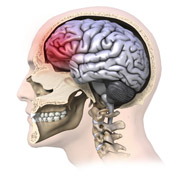Research and Innovation, UNL Office of

Center for Brain, Biology, and Behavior: Faculty Publications
ORCID IDs
Heather C. Bouchard, http://orcid.org/0000-0002-3646-6334
Kate L. Higgins, http://orcid.org/0000-0001-5340-8315
Maital Neta, http://orcid.org/0000-0001-8586-0963
Cary R. Savage, http://orcid.org/0000-0001-7997-6193
Douglas H. Schultz, http://orcid.org/0000-0003-0809-9036
Document Type
Article
Date of this Version
2023
Citation
bioRxiv preprint DOI: https://doi.org/10.1101/2023.03.07.531551
Accepted for publication in Journal of Neurotrauma (2023)
Abstract
Concussions present with a myriad of symptomatic and cognitive concerns; however, the relationship between these functional disruptions and the underlying changes in the brain are not yet well understood. Hubs, or brain regions that are connected to many different functional networks, may be specifically disrupted after concussion. Given the implications in concussion research, we quantified hub disruption within the default mode network (DMN) and between the DMN and other brain networks. We collected resting-state functional magnetic resonance imaging data from collegiate student-athletes (n = 44) at three timepoints: baseline (prior to beginning their athletic season), acute post-injury (approximately 48 hours after a diagnosed concussion), and recovery (after starting return-to-play progression, but prior to returning to contact). We used self-reported symptoms and computerized cognitive assessments collected across similar timepoints to link these functional connectivity changes to clinical outcomes.
Concussion resulted in increased connectivity between regions within the DMN compared to baseline and recovery, and this post-injury connectivity was more positively related to symptoms and more negatively related to visual memory performance compared to baseline and recovery. Further, concussion led to decreased connectivity between DMN hubs and visual network non-hubs relative to baseline and recovery, and this post-injury connectivity was more negatively related to somatic symptoms and more positively related to visual memory performance compared to baseline and recovery. Relationships between functional connectivity, symptoms, and cognition were not significantly different at baseline versus recovery.
These results highlight a unique relationship between self-reported symptoms, visual memory performance and acute functional connectivity changes involving DMN hubs after concussion in athletes. This may provide evidence for a disrupted balance of within- and between-network communication highlighting possible network inefficiencies after concussion. These results aid in our understanding of the pathophysiological disruptions after concussion and inform our understanding of the associations between disruptions in brain connectivity and specific clinical presentations acutely post-injury.
Included in
Behavior and Behavior Mechanisms Commons, Nervous System Commons, Other Analytical, Diagnostic and Therapeutic Techniques and Equipment Commons, Other Neuroscience and Neurobiology Commons, Other Psychiatry and Psychology Commons, Rehabilitation and Therapy Commons, Sports Sciences Commons


Comments
Copyright: This pre-print is available under a Creative Commons License (Attribution-NoDerivs 4.0 International), CC BY-ND 4.0